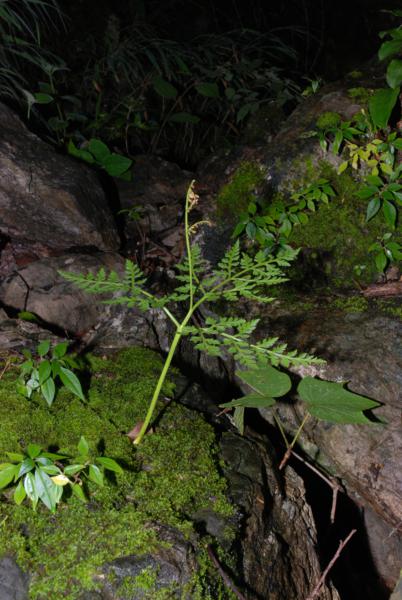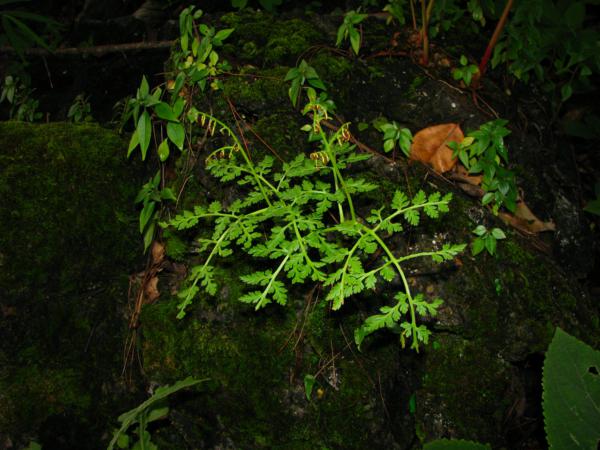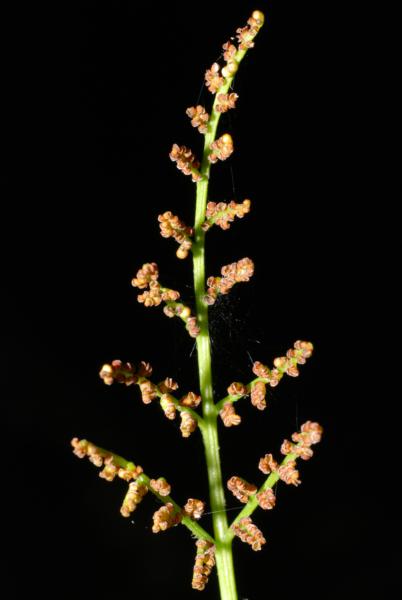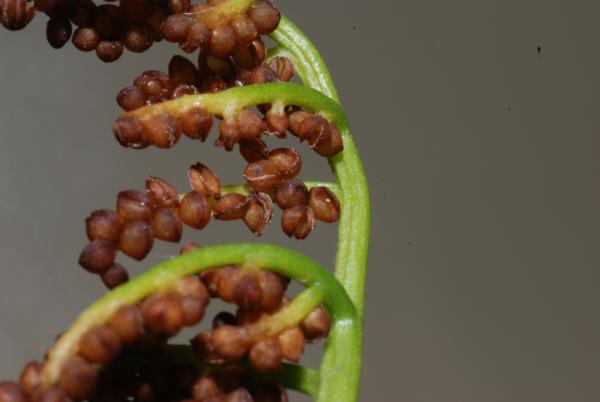
Botrychium lanuginosum Wall. ex Hook. & Grev.
Family
Ophioglossaceae
Nomenclature
Botrychium lanuginosum Wall. ex Hook. & Grev., Icon. Filic. 1: t. 79. 1831; Clausen, Mem. Torrey Bot. Club 19(2): 96, f. 19. 1938; Tardieu & C.Chr., Fl. Indo-Chine 7(2): 11. 1939; Ching, Fl. Reipubl. Popularis Sin. 2: 18, pl. 2, f. 7. 1959; Tagawa & K.Iwats., SouthE. Asian Stud. 5: 32. 1967; Tagawa & K.Iwats., Fl. Thailand 3: 39. 1979; Boonkerd & Pollawatn, Pterid. Thailand: 23, 65. 2000. – Botrychium virginianum var. lanuginosum (Wall. ex Hook. & Grev.) Bedd., Handb. Ferns Brit. India: 471, f. 295. 1883. – Japanobotrychum lanuginosum (Wall ex Hook. & Gev.) Nishida ex Tagawa, J. Jap. Bot. 33: 201. 1958.
Description
Terrestrial or lithophytic. Rhizome very short, erect, bearing fleshy roots, with a frond in each year in addition to a bud including a young shoot for the next year. Phyllomophore green or pale castaneous, fleshy, bearing stipule-like scales at base, downy hairy; trophophyll quadripinnate, oblong-subdeltoid, acute to acuminate at apex up to 30 cm long, 25 cm wide; lateral pinnae with 3 or more in opposite or alternate pairs below indefinite terminal ones, patent or slightly ascending, or the basal one somewhat deflexed, ultimate segments moderately acute or obtuse, with gross dentation formed by the apex of veinlets; texture coarse, fleshy, bearing pale downy hairs on axes as well as on laminar surfaces; sporophyll placed on rachis higher than at least the basal pair of lateral pinnae, with stalks 6–12 cm in length, spikes bi- or tripinnate, axes all downy hairy. Sporangia sessile on ultimate axes of spikes, globose .
Distribution in Thailand
NORTHERN: Chiang Mai.
Wider Distribution
N India to China and Taiwan, south to Sri Lanka, Vietnam, Philippines, Java and Sumatra.
Ecology
Terrestrial on rather dry mountain slopes in thickets or in muddy crevices of cliffs in light shade, at medium altitudes; locally abundant. The habitat of this species on Doi Chiang Dao is different from that on Doi Inthanon. On Doi Chiang Dao this species is known only in the muddy crevices of calcareous rock, and no leaves are observed in winter. On Doi Inthanon, on the contrary, it is a common terrestrial plant on grassy slopes, and the plants still persist in December. The Chiang Dao plants are more slender, though no taxonomic distinction is recognizable between them.
Proposed IUCN Conservation Assessment
Least Concern (LC). This species is very widespread although only rather locally abundant in Thailand.
Voucher specimens - Thailand
Middleton et al. 4993, Chiang Mai, Doi Chiang Dao Wildlife Sanctuary (E).
Habit
Habit
Fertile section
Sporangia
Site hosted by the Royal Botanic Garden Edinburgh. Content managed by Stuart Lindsay, Gardens by the Bay, Singapore and David Middleton, Singapore Botanic Gardens. Last updated 24 January 2012



